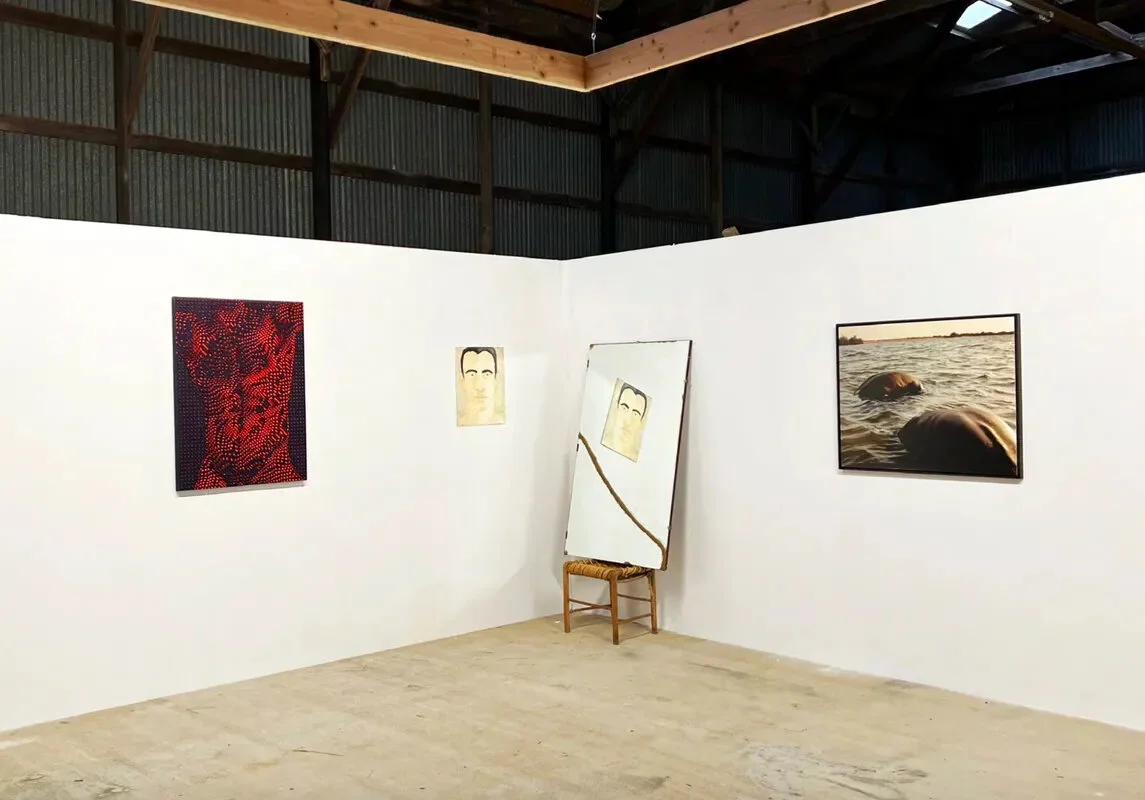PAST EXHIBITION
I SING THE BODY ELECTRIC
August 19 – September 21, 2022
I Sing the Body Electric features the work of 22 artists who each portray their own unique concepts of the body and what it means to embrace all bodies in this current day and age.
Inspired by Walt Whitman’s landmark poem I Sing the Body Electric from his 1855 poetry compilation, Leaves of Grass, DiJulio and Vardan have assembled a breadth of artists who offer unique portrayals of the body to varying levels of realism and entendre. Channeling Whitman’s questioning of almost 200 years ago: “And if the body does not do fully as much as the soul? And if the body were not the soul, what is the soul?” DiJulio and Vardan pull from a wide network of both established and emerging talent unified under one roof of an underutilized polo barn they discovered in the heart of East Hampton, New York. The duo wanted to preserve the natural character of the space, keeping straw, water pumps and barn doors in conversation with newly constructed gallery walls.
The show features paintings, photographs, sculptures and textiles by recognizable names such as Matthew Stone, Zachari Logan, Tommy Kha and Shantell Martin in addition to rising stars including Scott Csoke, Bhasha Chakrabarti and Matt Smoak. Hailing from a variety of locations from Brooklyn to Belgium, one unifier for those exhibiting is an embracing of a queer identity; an LGBTQ+ perspective of otherness that spans well beyond gender and sexuality. Despite the rainbows that encircle the rosy-cheeked cherubic figure and their tiny dog in Csoke’s baroque indebted portrait, or the forlorn young man sitting between the nude backsides of two male figures portrayed by John Brooks, the majority of the works in the show take a much more understated approach.
A photo by Tommy Kha depicts an installation in Brooklyn of cut-out prints of the artist’s hands tucked into a rocky coastline is displayed beside a hand-burned canvas by Cole Lu depicting images of antique woodblock prints, take a more abstract presentation of the human form. Co-curator Nio Vardan contributes a nostalgic image of a child neck-deep in the ocean gazing into a sun flared oblivion, situated amongst other photographs like those by Austrian-Nigerian artist David Uzochukwu and humanitarian photographer Raphael Chatelain.
Several self-portraits such as the dual canvases of recent Yale MFA grad Bhasha Chakrabarti (which feature a diptych representation of the artist and another woman lying in bed) and the doubled, self embracing canvas from Jordan Ramsey Ismaiel take a realist approach to figuration. The emerging talents of Wes Aderhold, J. Carino and Kan Seidel reference surrealism and abstraction, reducing figures to distorted effigies tumbling through rural landscapes and domestic spaces.
The sculptural elements introduced to the exhibition through the terracotta hands of Italian-British Giovanni Leonardo Bassan, mirror-based installation of Matt Smoak and the hand-built concrete response to the gilded frame of yore which surrounds the dream-like canvas of Chelsea Culprit, offer a departure of art from the wall. This notion is perpetuated by the sculptural painting of Joseph Parra in which a squeezed-from-the-tube image reveals itself only from a distance as the torso of a male figure and the image of a dark-skinned mermaid by Nereida Patricia, comprised of heaps of seed beads, paint, and glitter.
The approach to the fledgling Dune Alpin exhibition space takes the visitor past vast open pastures and abandoned grain silos and into a uniquely understated turn of the century building with soaring eaves and plentiful natural light from skylights above. Artworks hung on white walls, on barn doors and suspended from the ceiling—as in the hand-dyed and quilted painting of Tura Oliveira—embrace the spirit of the space.



















